awarenia
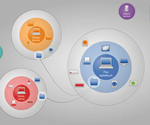
The goal of awarenia is a simple and intuitive to use user interface to manage hardware and devices connected to the computer. With the system, connected devices can be shared with others (fully or partially) and devices form other computers can be used as if they were connected to the own device.
Team: David Bergmann, Florian Heckel, Philipp Merkel
Adviser: Prof. Dr. Reinke, Roger Walk
Context: Elective course Interactive Systems 2008/09
iNet
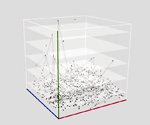
In order to visualize complex social networks, like genealogical networks that map relationship connections, an abstract data model was developed for such network structures. The network is being visualized in 3D environments in a transparent cube. The axes can represent node characteristics and act as a scale. This way areas in the cube can be selected that contain certain value combinations.
Team: Christian Scheb, Martin Jäger
Advisers: Prof. Dr. Reinke, Roger Walk
Context: Elective course Interactive Systems 2008/09
w3i
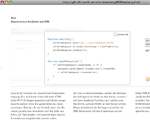
w3i is an interactive script for the lecture Web Engineering. Theoretical backgrounds for current web technologies are visualized with practical examples.
Team: Florian Heckel, Martin Jäger, Christian Scheb, David Bergmann, Timo Ernst, Philipp Merkel, Orlando Maier, Armin Pfäffle, Kathrin Wunderlich
Adviser: Prof. Dr. Reinke, Roger Walk
Context: Elective course Interactive Systems 2008/09
newsmachine
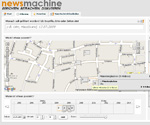
The project newsmachine is an interactive online platform that enables comfortable publication and finding of location, time, and topic specific news entries. Entries are videos which can be published by anyone.
Adviser: Roland Barth
Context: Elective course Interactive Video 2008/09
Future Canteen
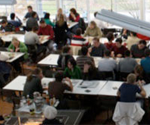
The project The Future Canteen is a student project to automated the operation and processes of the canteen. The result should be a more pleasant experience for users.
Team: Maximilian Graf, Sung-Eun Kang, Andreas Robecke
Adviser: Stefan Dietzel
Context: Elective course Ubiquitous Computing 2008/09
LaserPin
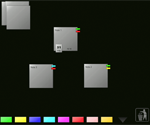
LaserPin is a novel notepad and calendar application, which can be used similar to a typical cork board. The main area is projected onto a wall with a video projector. A webcam films the main area and the light point of a laser pointer is detected as user controls.
Team: Robert Schmitz, Bernhard Seibold, Markus Stoicsics
Adviser: Thorsten Mahler
Context: Elective course Ubiquitous Computing 2008/09
A VANET-bassed Emergency Vehicle Warning System
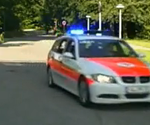
One often cited use case for vehicular networks are applications that relate to emergency vehicles. In addition to the traditional siren, they could use radio communication to warn other vehicles or to preempt traffic lights. Such an application can reduce accident risks during emergency response trips and also help save valuable time. We developed a comprehensive design of such an emergency vehicle warning system that makes full use of inter-vehicle communication but also encompasses roadside infrastructure like traffic lights. In our system, other vehicles are not simply warned of an approaching emergency vehicle; they also receive detailed route information. Based on this information, timely and appropriate reaction of other drivers is possible.
Author: Andreas Buchenscheit
Supervisors: Michael Weber, Frank Kargl
Adviser: Florian Schaub
Context: Diplom thesis (2009)
PHY and MAC Layer Security in 802.11 Networks

Network communication using unprotected air as a medium leads to unique challenges ensuring confidentiality, integrity and availability. While newer amendments of IEEE 802.11 provide acceptable confidentiality and integrity, availability is still questionable despite broad usage of Wi-Fi technologies for tasks where availability is critical. This thesis presents new security weaknesses that have been identified in the 802.11 standard and especially the 802.11h amendment. The results are underlined by an extensive analysis of attacks addressing the quiet information element and channel switch announcement in management frames. For some stations a complete DoS effect can be achieved with a single packet for more than one minute. This shows that the newly identified attacks are more efficient than earlier approaches like a deauthentication attack. Tests were performed with a large variety of network interface cards, mobile devices, and operating systems.
| Author: | Bastian Könings |
| Adviser: | Frank Kargl |
| Supervisors: | Michael Weber, Frank Kargl |
| Context: | Diplom thesis (2009) |
| Resources: |
Received CAST security award 2009
